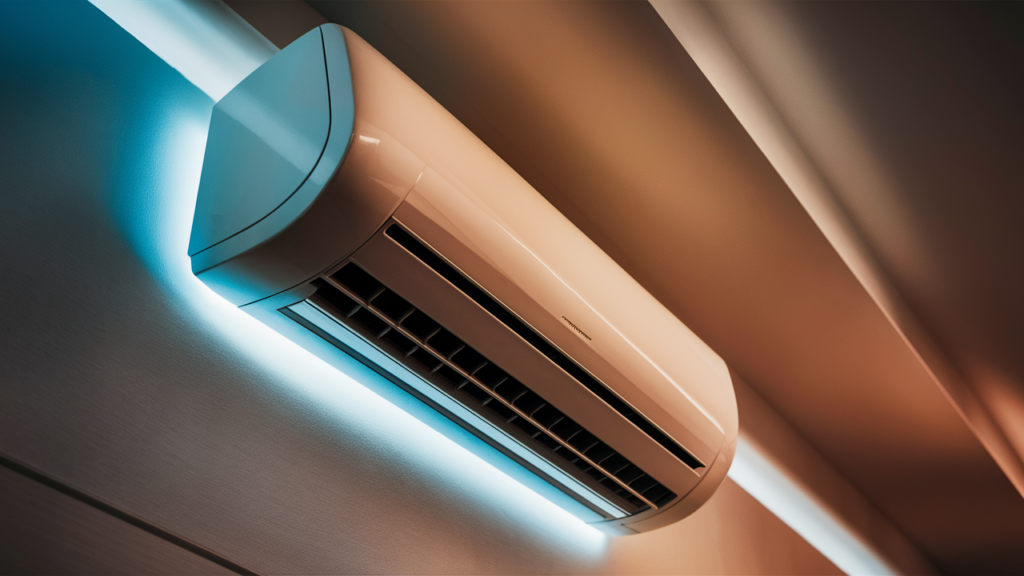
If your GE air conditioner is showing an F10 error code, there’s no need to panic. With a little guidance, you can troubleshoot the issue and potentially avoid a costly service call.
What Does the F10 Error Code Mean?
The F10 error indicates a heat pump over-temperature fault. This occurs when the indoor coil temperature exceeds 131°F, surpassing the unit’s safe operating limit. When this happens, the system disables the outdoor fan motor to protect the air conditioner from potential damage, allowing the coil temperature to cool back down to a safe level.
Tools You’ll Need
- 5/16-inch socket or drive
- 1/4-inch socket or drive
- 4mm Allen wrench
- Multimeter
Safety Precautions
Before starting any maintenance or repairs, follow these safety guidelines to minimize risks:
- Power Off: Unplug the air conditioner or turn off the circuit breaker to avoid electrical shock.
- Cool Down: Let the appliance cool completely if it has been running.
- Work Deliberately: Take your time to prevent accidents or mistakes.
- Clear Workspace: Ensure the area is well-lit and free of clutter, keeping pets and children away.
- Avoid Moisture: Keep your hands dry and the work area free of water.
- Consult the Manual: Review your air conditioner’s user manual for specific safety instructions.
- Use Caution with Wires: Handle wires carefully. If working with exposed terminals, use insulated tools or gloves.
- Document Connections: Take pictures or notes of any wiring before disassembly to simplify reassembly.
- Wear Gloves: Insulated work gloves can protect against sharp edges and electrical components.
- Avoid Live Voltage Testing: If you’re unsure how to test live voltage safely, skip it to prevent short circuits or injuries.
How to Troubleshoot the F10 Error on Your GE Air Conditioner
Step 1: Inspect the Airflow
- Inspect the air filters on the unit for dirt or clogs. Clean or replace the filters as needed.
- Ensure there is no obstruction blocking the airflow around the unit, such as furniture, curtains, or other objects. Make sure the unit has adequate clearance on all sides.
- Verify that the set temperature on the unit is lower than the ambient room temperature.
Step 2: Disconnect the Unit and Remove the Front Cover
- Disconnect the unit from the power source for safety.
- Lift the front cover from the lower corners and pull it straight out to remove it from the clips.
Step 3: Inspect the Thermistor and Blower
- Inspect the thermistor for damage, debris, or blockages that could prevent it from working properly.
- Examine the indoor blower and fan for any issues that could reduce airflow.
- Check for any loose wiring connections to the thermistor and reseat them if necessary.
Step 4: Measure the Thermistor Resistance
- Set the multimeter to the resistance (Ω) setting.
- Measure the resistance between the following pins on the J29 connector:
- Pin 1 and Pin 2 (AIR range: 7k Ohms to 64k Ohms)
- Pin 3 and Pin 4 (COIL range: 10.5k Ohms to 95k Ohms)
- Pin 5 and Pin 6 (OUTLET range: 35k Ohms to 300k Ohms)
Step 5: Evaluate the Results and Take Action
- If any resistance values fall outside the specified ranges, replace the thermistor.
- If the thermistor passes the resistance tests and the error persists, consider replacing the control board as a last resort.
Also Read: F4 error on a GE air conditioner: A troubleshooting guide from the pros
Preventative measures can save time, money, and stress when it comes to maintaining your air conditioner. Here are a few ways to reduce the likelihood of seeing the F10 error code:
- Regular Maintenance: Schedule routine professional inspections to ensure your air conditioner is in good working condition. A technician can check for refrigerant levels, clean internal components, and catch potential issues early.
- Clean Air Filters: Replace or clean air filters every 1-3 months, depending on usage and manufacturer recommendations. Clean filters improve airflow and prevent the indoor coil from overheating.
- Inspect Coils and Fins: Regularly clean both indoor and outdoor coils to remove dirt and debris. Use a soft brush or specialized cleaner for delicate fins and coils.
- Monitor Ventilation: Ensure that air vents and registers are not blocked by furniture, curtains, or other obstructions. Adequate airflow helps maintain consistent cooling and reduces strain on the system.
- Check Thermostat Placement: Position your thermostat away from heat sources like sunlight, lamps, or appliances. Accurate temperature readings help prevent the unit from overworking.
- Maintain Outdoor Unit Clearance: Keep at least two feet of clearance around the outdoor condenser. Remove nearby plants, debris, or anything that could restrict airflow to the unit.
- Use the Right Settings: Avoid setting the thermostat too low for long periods. Extreme settings can cause unnecessary strain on the system and increase the risk of faults.
Implementing these preventative measures will not only help avoid the F10 error but also improve the efficiency and lifespan of your GE air conditioner.
Conclusion
And there you have it! Tackling the F10 error on your GE air conditioner doesn’t have to be a headache. By following the steps outlined and staying on top of routine maintenance, you can keep your unit running smoothly and save yourself the hassle of expensive repairs. Next time the error pops up, you’ll know exactly what to do.
